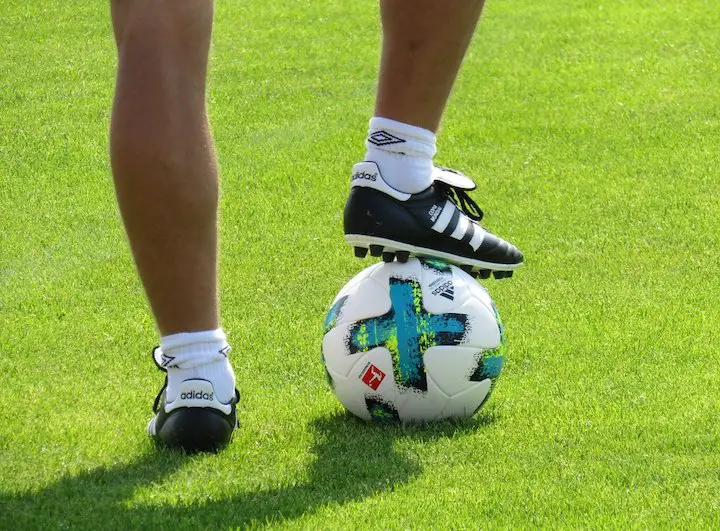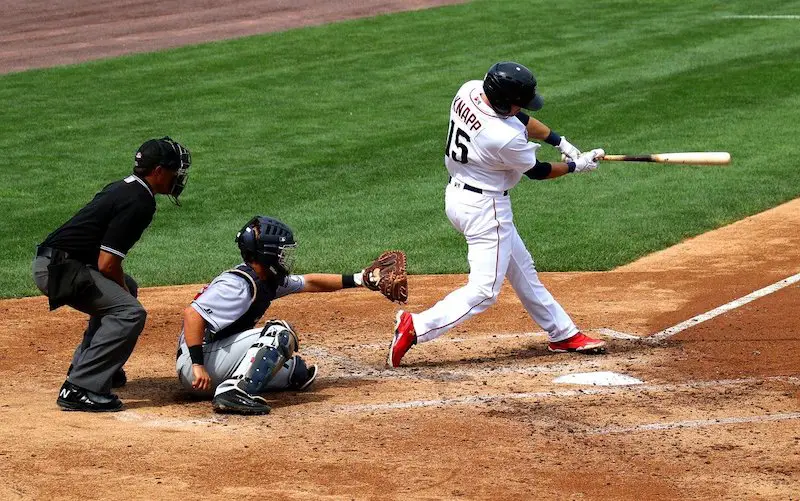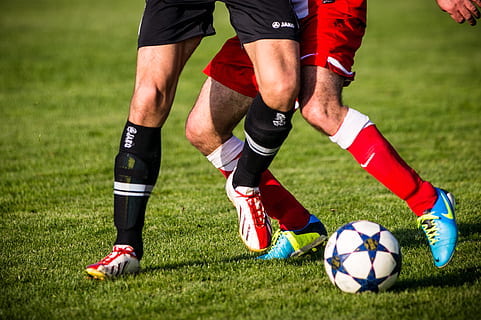Your Guide
 Alex Waite
Alex Waite
During one off-season, I saved up for a new pair of cleats ready for the upcoming season.
I put all my hard-earned cash towards brand new Adidas Predators, thinking I would instantly start playing like the 90s and 00s soccer icons David Beckham and Zinedine Zidane.

In reality, after the first pre-season training session, I had small blisters that were slightly painful.
I was IN DENIAL; it couldn’t possibly be the cleats after I had invested so much in them.
I persisted with Predators, but the blisters got larger and more painful. Then, to add insult to injury, I injured the sole of my foot too!
I was sidelined for two weeks.
Looking back, I did little research on my cleats, took them out of the box almost straight away, and started using them. In hindsight, this was a HUGE MISTAKE!
Unfortunately, I learned the hard way that without preparation and a break-in period, even the most expensive, best-quality cleats around can cause you harm.
In this article, we share some of the best tips on how to break into soccer cleats. We will also look at some of the top tips to avoid injury when purchasing new cleats.
Soccer cleats are likely to be your most important and most expensive purchase when playing soccer. But they can also be the most painful.
If soccer cleats are not broken in properly and not given enough care, YOUR FEET WILL SUFFER.
You could also lose a lot of money by not breaking in an expensive pair of cleats.
How to Break in Soccer Cleats
Breaking in soccer cleats is a process of four main steps.
It begins with researching your preferred cleats, purchasing the right size, taking them for a trial and slowly wearing them in.
Below are the four steps required for a seamless breaking-in period for your soccer cleats.
Remember, taking time to get your choice right is part of the process that will save you time, and money and prevent injury.
1) Research For Your Perfect Pair of Cleats
Before outlaying hundreds of dollars on a great pair of cleats, take time to investigate the right fit for you.
Ask questions about whether you have a slim or wide foot?
Do you play in dry or wet conditions for most of the season?
Will you play on grass, 3G, or astroturf surface?
Do you wear strapping around your ankle and feet?
This initial step ensures you are prepared to look for what suits you and your game best and not necessarily the most popular cleats available.
2) Get the Boots Size Right
Choosing perfect fitting cleats helps players to avoid injuries and aids performance. New cleats should be snug on your feet, but with a little space between your toes and the toe of the clears.
There is some debate about whether to choose bigger or smaller-sized cleats than your sneaker size.
However, feeling is the most important factor rather than size. A cleat that is too loose will cause less control and discomfort.
A too-small cleat will rub, be less breathable, cause friction and lead to injury.
Professional soccer players famously wear boots a size or two smaller than their sneaker size to improve touch and contact with the ball. But this leads to serious injury and severely damaged feet.
3) Test Drive Your Soccer Cleats
You wouldn’t buy a new car without taking it for a test drive around the block to make sure it doesn’t break down, so do the same with soccer cleats!
Try some typical soccer movements in your new cleats; jogging, sprinting, jumping, turning quickly, kicking, controlling, etc.
This will help to get a better feel and judgment on the cleats before you commit to them. This is also where you could realize that the cost of your cleats may not be worth the comfort.
4) Alternate Training Sessions in Your New Cleats
Once you’ve settled on your cleats, try them for one training session, or even half a session if possible.
This time allows your feet to adapt to the leather on the boot and get used to the sole. Over time, boots will fit seamlessly after three or four sessions.
5) Don’t Rush!
Taking time is essential when breaking in soccer cleats. Rushed decisions to wear boots straight out of the box for a 90-minute game will cause problems for players at any level.
Be diligent in your decision-making, then you will be rewarded with well-fitting, comfortable and high-performing soccer boots.
Insider Tips
The steps above are a fundamental guide to breaking in soccer cleats. Following this process should help with injury prevention and add comfort over time.
However, there are further steps you can take when breaking in cleats if you want to speed up the process.
There is no substitute for taking time and being detailed when breaking in soccer cleats. But some soccer emergencies may require more drastic action.
In the past, I’ve been aware that my old, trusted boots were on the verge of ripping apart in a match.
I took a spare, cheaper pair with me in case of breakage to my old boots. But the demands of playing and training multiple times a week meant I had little time to properly break in my new cleats.
In one match, my old boots ripped along the seam and exposed my foot. With no alternative, I had to get my new pair on for the remainder of the match.
To prevent damage to my feet and my new boots, I used some of the quick fixes below.
A) Use petroleum jelly: By rubbing a little petroleum jelly on the outside and inside of your cleats, you add another layer of protection for your cleats.
It also binds the leather more quickly, speeding up the breaking-in process.
B) Tape your feet: Support tape and protection gel packs are now readily available that soccer players can apply to their feet.
Wrapping tape or gel packs to heels, toes and around the soles of feet absorbs some pressure when playing soccer.
Ensure you have played with tape and gel packs before using them in a game. Otherwise, it can feel very unnatural and affect performance.
C) Wet boots before use: Wearing your boots and wetting them in warm water for 15-20 minutes can speed up the breaking in process.
This helps the leather to soften, making cleats more supple on your feet. Only do this with leather boots as warm water can damage synthetic mate
Conclusion
All soccer players want a reliable, good-quality pair of soccer cleats. Once you are comfortable with your cleats and you have broken them in, you won’t want to change.
After my Adidas Predator disaster, I have always taken time to get my soccer cleat choice right and committed time to effectively break them in.
I now stick with the same pair of boots for years and only upgrade when my old boots break or are too worn to use.
In my view, this is a good investment in both my wallet and my feet. I know what style of cleats help me perform at my best, and I know that I’m getting value in my purchase.
Ultimately, there may be times when you will have to rush the breaking-in process for soccer cleats. But only use these tricks as a last resort.



